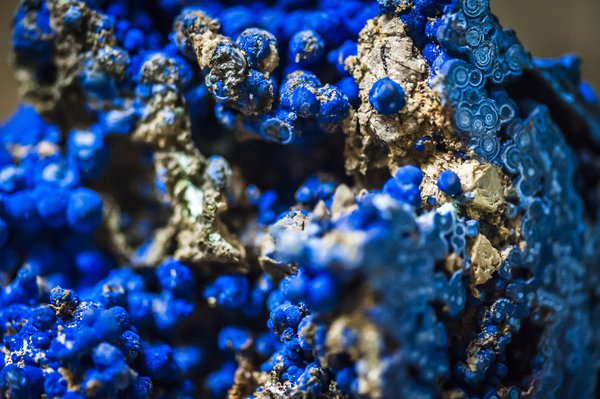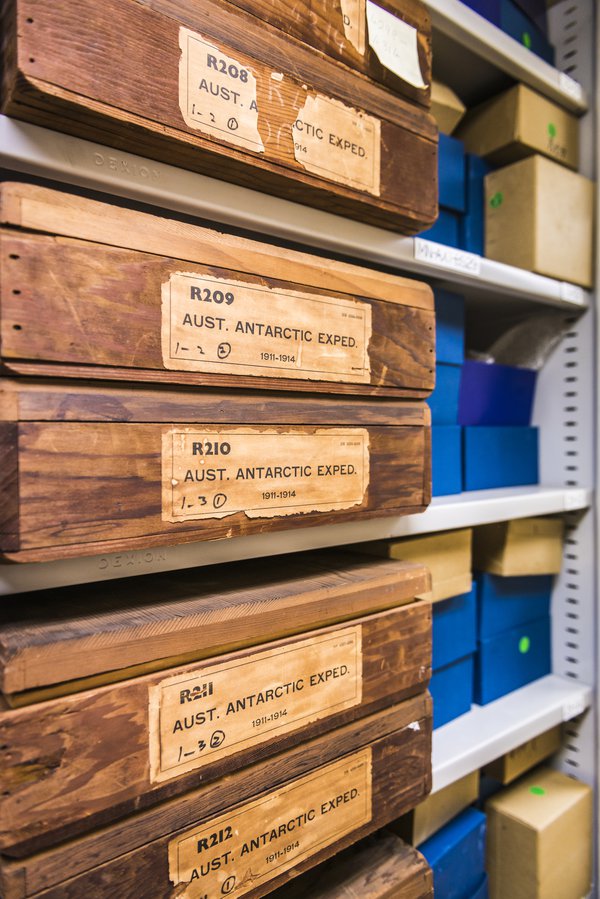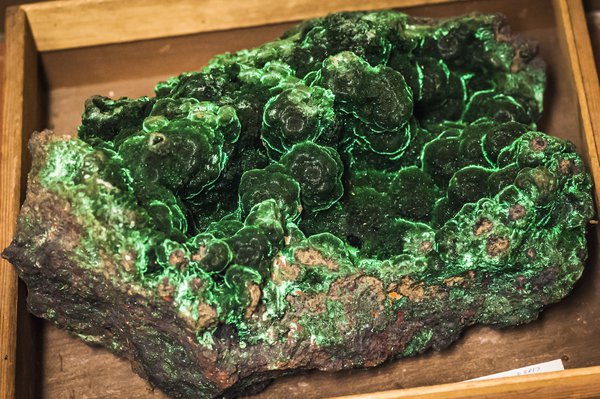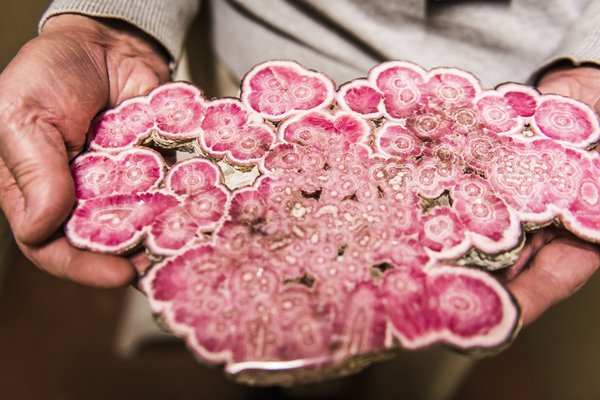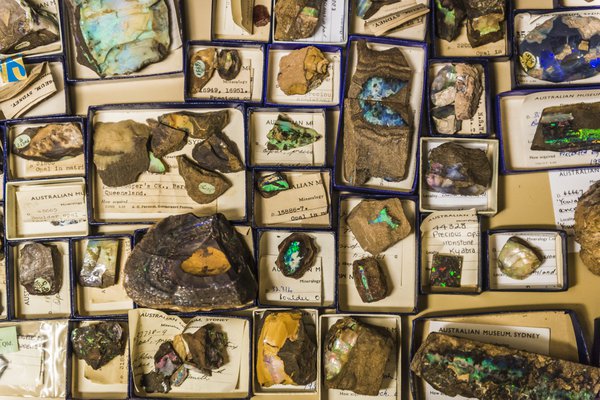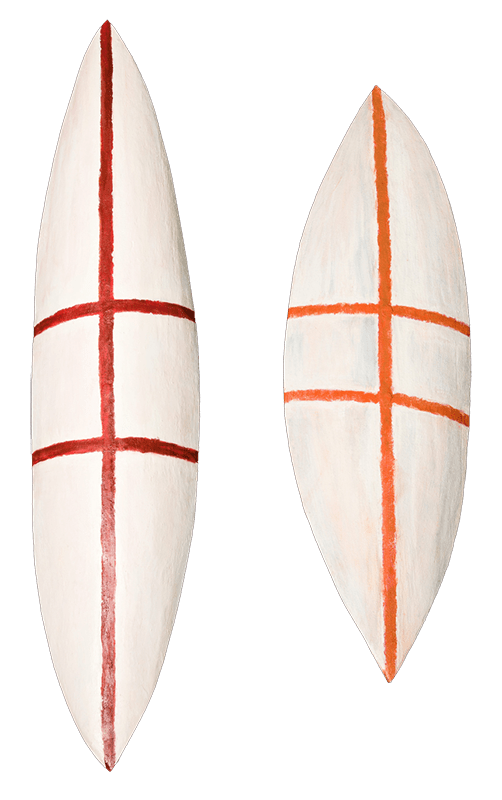Mineralogy
Mineralogy and petrology are the study of minerals and rocks.

- Minerals are classified in species according to their chemical composition and crystal structure.
- Rocks are made up of aggregates of minerals.
The Australian Museum Mineralogy and Petrology collection consists of 79,745 registered specimens, primarily made up of 60, 475 minerals, but also including 19,270 rocks (including 755 meteorites) and 8 Type specimens. Approximately 46 percent of the collection is digitised and stored across locations including the Australian Museum site in the Sydney CBD, Castle Hill Discovery Centre and the Bathurst Fossil and Mineral Museum.
The collection is the oldest rock and mineral collection in Australia, and the mineral component is the largest of any Australian collection. The meteorite collection is the oldest and second largest in the country.
The Mineral collection has a taxonomic coverage of 1,523 mineral species. About 35 percent of the collection is from NSW, 25 percent from other Australian states and Antarctica, and 40 percent from overseas. Special features of the collection are minerals from Broken Hill, New England and Cobar regions of NSW, zeolite minerals, the Sir Douglas Mawson Antarctic collection, suites of eastern Australia mantle and crustal xenoliths from volcanic rocks, Australian meteorites and tektites, gemstones, and the George Smith, Chapman and Somerville mineral collections.
The first mineral specimens were acquired under the guidance of prominent geologists & mineralogists such as Rev. W.B. Clarke, and Professors A. Thomson and A. Liversidge of Sydney University. The Australian Museum Trustees approved purchase of high quality European and American specimens from classic localities, in 1860, 1878, and in the 1880s, from dealers such as Ward and Howell, Foote, Gregory, Sturtz, Krantz, Bertrand, Schuchardt and Stadtmuller.
The first curatorial Mineralogist, Felix Ratte, was appointed in 1881, and he commenced the first mineral collection register in 1887. Ratte, and his successor Dr Thomas Cooksey catalogued 15,000 minerals, rocks and meteorites between 1887 and 1901. With increasing 19th and early 20th century mining activity, magnificent collections were assembled by private individuals and companies. Magnificent Broken Hill collections of mainly oxidised zone minerals were donated by the Broken Hill Proprietary Company in 1895 & 1933, containing some of the best cerussite, pyromorphite, smithsonite, stolzite and silver halides ever put together from this orebody. Superb Australian collections were purchased in 1907 and 1927 from George Smith, and from D.A. Porter in 1901 & 1929, rich in Broken Hill, Cobar, and New England (NSW) specimens, as well as those from Queensland, Tasmanian & South Australian mines. Other important Australian collections acquired from Eustice, Coombe, Sweetapple and Yates, contained many fine Broken Hill, South Australian and New England (NSW) minerals, as well as overseas specimens.
The collections were built up under the guidance of successive Curators Dr. Charles Anderson, from 1901; Thomas Hodge-Smith, from 1921; R. Oliver Chalmers, from 1945 to 1971; Dr. F. Lin Sutherland, from 1973 to 2001 (assisted by Joan Hingley, appointed 1972), and by Collection Managers Joan Henley (Hingley) from 1983 and Ross Pogson, from 1989, assisted by Gemmologist Gayle Sutherland (Webb) (from1985 to 2014), and Dayna McGeeney (appointed 2016). The magnificent Albert Chapman mineral collection of 820 specimens was purchased by the New South Wales Government in 1988, and after initial housing in the Earth Exchange Museum, was transferred to the Australian Museum in 1995. This collection is renowned for its mineral diversity, crystal perfection, aesthetic appeal and high Australian content. The important Warren Somerville collection of 3350 specimens was acquired in 2000 and housed at Bathurst. Recent important acquisitions include the J.J. Johnston, G. Dreyer (Broken Hill minerals), Allison Family (gemstones and gem crystals) and Ian Hall collections.

